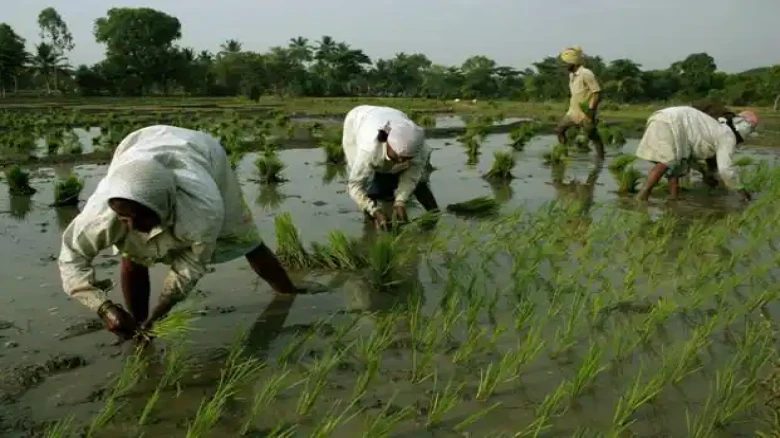Sports

Due to a global food crisis, this year's harvests must be robust. Rich summer harvests increase rural spending and assist to control inflation, which helps the overall economy.
Digital
Desk: Due to a highly uneven monsoon, farmers are rushing to plant important
summer crops that makeup about half of the nation's yearly food production,
with the sowing of rice falling far behind schedule.
According
to official sowing data examined by Prag News, the area under major food crops
has been largely average so far, although the area under rice, the summer
staple, has decreased 12.4% compared to last year's levels.
mso-themecolor:text1">After six years of record-breaking production, India's
output of foodgrains is expected to decline for the first time. In light of
rising cereal prices, a lesser area planted in rice could reduce harvests.
The
area planted with the main Kharif crops, as tracked by the agriculture
ministry, is currently 3.7% below last year's levels. Ninety-six million
hectares of seven important summer crops are currently planted, down from last
year's 100.1 million hectares.
Due
to a global food crisis, this year's harvests must be robust. Rich summer
harvests increase rural spending and assist to control inflation, which helps
the overall economy.
mso-themecolor:text1">While the area planted with oilseeds was only slightly
smaller than it was at this time last year, the area planted with pulses showed
a 4% reduction. Up to two-thirds of the nation's need for edible oil is
satisfied by imports, while imports account for 16% of domestic pulse
consumption.
mso-themecolor:text1">
mso-themecolor:text1">
mso-themecolor:text1">Farmers in places with heavy rainfall, like Madhya
Pradesh and Karnataka, were forced to resow their fields. The sowing of tur, a
crucial variety of pulses, has been impeded by heavy rains in Karnataka,
Maharashtra, and Madhya Pradesh. Tur's total area, at 4.2 million hectares, is
10% behind schedule. According to the data, farmers have planted 3% more coarse
cereal and millets now than they did at this time last year.
mso-themecolor:text1">The country as a whole has had a cumulative 8% surplus
during the June to September monsoon, which irrigates around 60% of the
net-sown land. The fundamental cause of the slow sowing is the severely skewed
distribution of precipitation in July, the most important month for planting
crops.
While
southern states experienced an excess of precipitation of 37%, eastern states
experienced deficiencies of up to 16%.
Paddy
sowing has been slowed down by insufficient precipitation in states that grow
rice, including Uttar Pradesh (down 43%), West Bengal (22%), and Bihar (down
37%). According to data from the agriculture ministry, compared to last year,
approximately 4.3 million hectares of paddy have not been planted.
mso-themecolor:text1">According to Rahul Chauhan, an analyst with the commodity
trading company IGrain Pvt Ltd, "traders are concerned that the government
could impose limitations on rice exports depending on the shortage of
output."
India
halted private wheat exports in May following an estimated 3% decrease in
production brought on by an unseasonably warm spell. Rice production will
likely suffer from spotty rainfall as well.
The
government currently has adequate rice on hand. The Union government-owned 31.5
million tonnes of supplies as of July 1, which is around 133% more than the
necessary 13.5 million tonnes for a buffer.
mso-themecolor:text1">India is a significant rice exporter, as opposed to
wheat. India exported roughly 21 million tonnes of rice in 2021–2022 or about
a sixth of its entire output. Exports could be impacted by a decreased output.
Leave A Comment